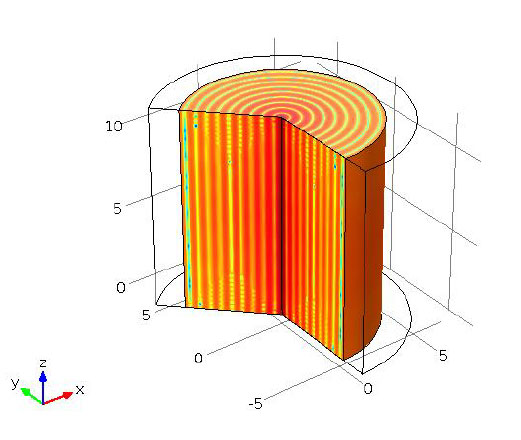Hae-Rang Hwang – espoirang@gmail.com
Yonggang Cao
Pukyong National University
Department of Physics
Daeyeon Campus (608-737) 45, Yongso-ro, Nam-Gu. Busan, Korea
Jungsoon Kim
Tongmyong University
428, Sinsun-Ro, Nam-Gu, Busan, Korea
Moojoon Kim
Kang-Lyeol Ha – hakl@pknu.ac.kr
Pukyong National University
Department of Physics
Daeyeon Campus (608-737) 45, Yongso-ro, Nam-Gu. Busan, Korea
Popular Version of Paper 1aPA6
Presented Monday morning, May 14, 2012
163rd ASA Meeting, Hong Kong
In general, contaminated water without any treatment for purification contains various suspended solids or biological particles. The physical filtration for removing them is a basic process of water purification. The filtration is carried out by using several kinds of filters such as sands, sieves, and membranes. The particles are aggregated so that the density becomes higher at particular positions in water, the filtration might be easier.
When two acoustic waves of the same frequency propagate in opposite directions, a standing wave field in which the positions of maximum and minimum potential energy are placed with a constant separation is produced in the medium. If the field is produced in water, randomly suspended particles move to the positions of minimum potential energy due to the acoustic radiation force. Consequently, those particles are aggregated and align in multiple lines.
Many research results of biological particle trapping by using standing wave fields have been reported so far. However, an usual, the plane ultrasonic waves are used in that research. In this study, the cylindrical standing waves by a cylindrical ultrasonic transducer, which is more convenient to apply to water purification, is employed to trap and aggregate microorganisms, such as green algae Chlorella.
The calculated radial variation of the radiation force and potential energy in a cylindrical ultrasonic transducer with infinite length is shown in Figure 1(a), and the three dimensional standing waves pattern formed inside of a water-filled cylindrical PZT transducer with 12.0 mm length, 1.25 MHz resonance frequency, 10.5 mm inner diameter and 1.65 mm thickness is shown in Figure 1(b). Those figures show that particles like microorganism should be placed near the positions marked by ![]() in Figure 1(a) and near the yellow lines in Figure 1(b).
in Figure 1(a) and near the yellow lines in Figure 1(b).
 |
 |
(a) |
(b) |
Figure 1: Trapping positions of microorganism with (a) one dimensional variation of radiation force |
|
Figure 2 shows the variation of trapped pattern of the colony of Chlorella with the lapse time after the transducer is driven. The pictures were taken from the upper side of the transducer. It is shown that the particles can be trapped and the patterns agree well with the calculation results shown in Figure 1. Because of the movement of the microorganism by the radiation force, the patterns become more obvious according to the lapse time. Another example of the aggregation phenomenon with the lapse time is shown in Video 1.
 |
Figure 2: Variation of trapped pattern of the colony of green algea Chlorella with the lapse time.t=0-, (b) t=0+, (c) t=5 s, (d) t=10 s, (e) t=20 s |
The effect of the aggregation on filtration of the microorganism was confirmed by using an apparatus with the cylindrical transducer and a sintered glass filter. The apparatus was attached on the way of the channel flowing the contaminated water. The filter was placed apart 3.0 mm from the bottom of the transducer. The contaminated water flows through the transducer and the filter, and the speed of the flow related to the ultrasonic treatment time is controlled by two valves. The filters with different maximum pore sizes are examined and the efficiency of filtration is evaluated using a spectrophotometer. Consequently, it is expected that the ultrasonic treatment is able to improve on the efficiency of current water purification.